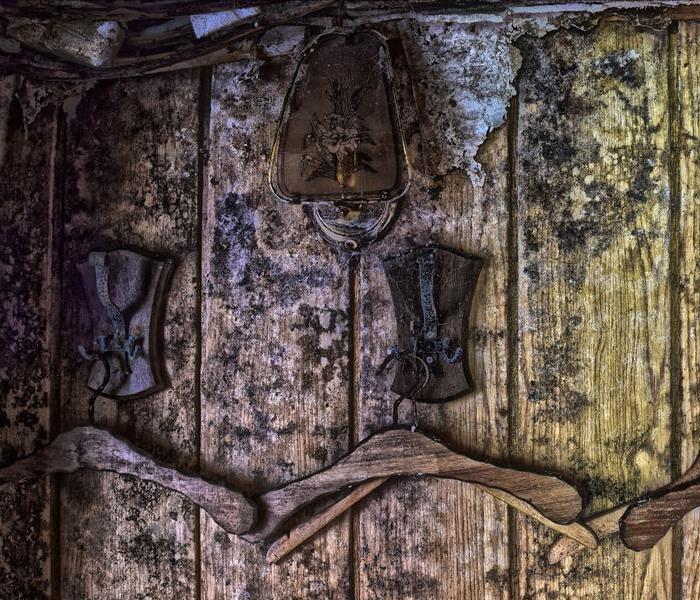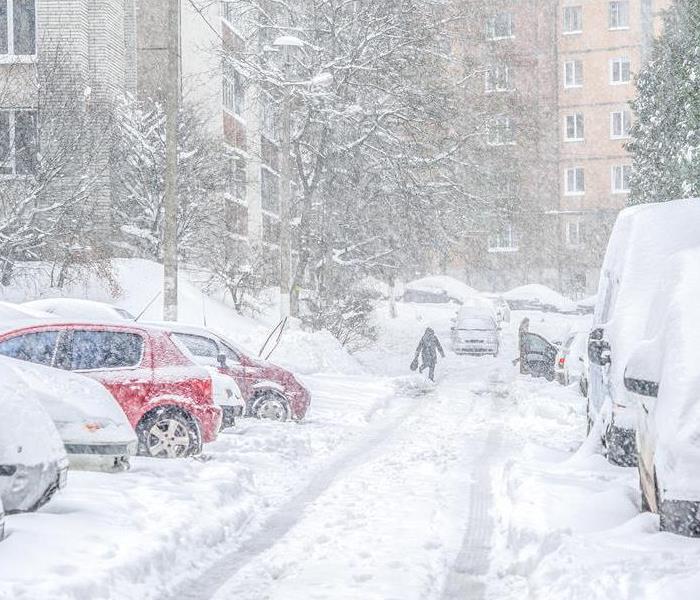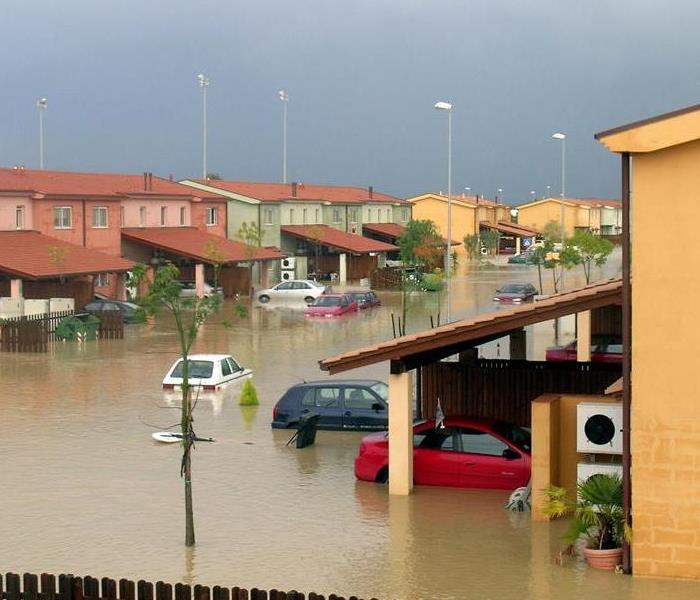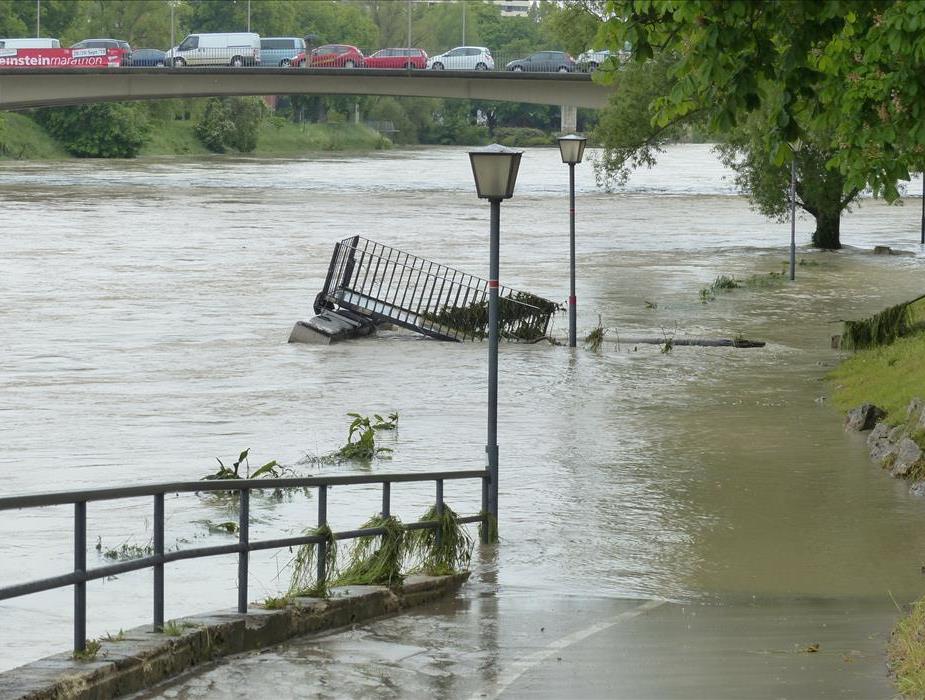Recent Posts
When does Water Damage Cause Mold?
5/19/2022 (Permalink)
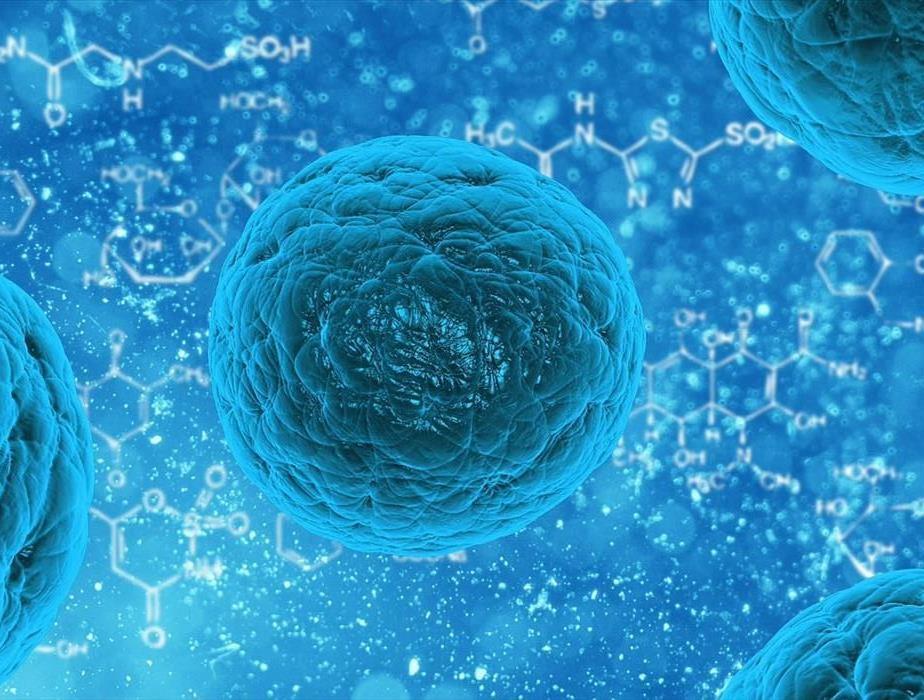 Do I have mold?
Do I have mold?
Whenever you have a water loss, it is a nerve-racking experience. You have to worry about cleaning up the water, drying out what’s affected, and possible mold growth. Sometimes you can take care of these things on your own, other times a professional company, like SERVPRO®, needs to come in assess it and then clean it. With any water loss, mold should be a worry, but when does water actually cause mold growth?
Different types of water damage that can cause mold growth are:
- Sewage back-up from flooding in the area.
- Plumbing or roof leaks.
- Damp basement or crawl space.
- Overflows from sinks or bathtub.
- High humidity: steam cooking, dryer vents, humidifiers.
- or any type of stagnant water in your home.
Mold will begin to grow 24-48 hours after the initial water damage. If you discover the source of damage, stop it quickly, and clean up the mess you likely don’t have to worry about mold. If the water damage isn’t found within a few days, mold is going to become a concern.
If the water is not dried out within that time window, a professional may apply antimicrobial products to prevent growth. This is why you should contact a professional no later than 48 hours after the initial damage, if there is still moisture present.
The best way to prevent mold growth from water damage is to clean up the water and dry out the area as fast as possible. If you aren’t sure whether or not you can dry it out on your own, contact SERVPRO of Logan Square/Humboldt Park and we can advise you on the next steps to take to prevent further damage to your home.
SERVPRO® Deploys Disaster Recovery Team to Assist in Storm Cleanup Following Hurricane Ida
9/20/2021 (Permalink)
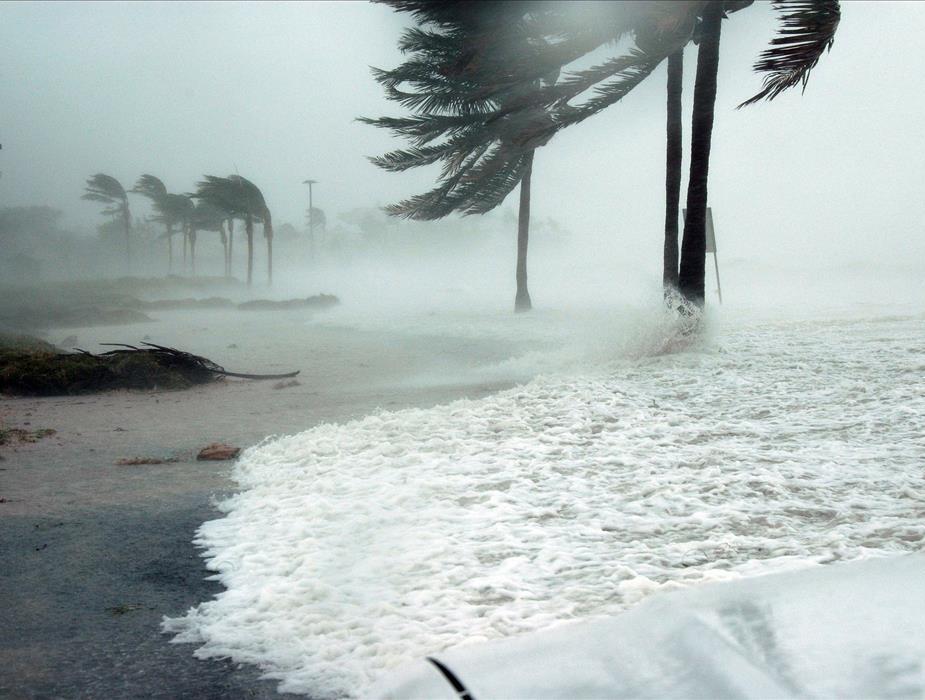 SERVPRO’s Disaster Recovery Team has been activated to help residents and business owners in storm-damaged areas in Louisiana, Mississippi, and NY.
SERVPRO’s Disaster Recovery Team has been activated to help residents and business owners in storm-damaged areas in Louisiana, Mississippi, and NY.
GALLATIN, Tennessee, August 30, 2021--SERVPRO’s Disaster Recovery Team has been activated to help residents and business owners in storm-damaged areas in Louisiana and Mississippi. SERVPRO’s Disaster Recovery Teams will be assisting more than a dozen local franchises already located in the affected areas. SERVPRO has more than 200 crews ready to mobilize, with some crews already on the ground ready to assist home and business owners.
After the water begins to recede and authorities determine it is safe for residents to return to their property, there are several steps that can be taken to prevent additional damage from occurring. SERVPRO suggests the following steps to help minimize additional damage to your property while waiting for disaster professionals to arrive.
- If water has entered the structure through the flooding of a creek, stream, or river, or if it has filtered through insulation during its intrusion, it is considered to be black water and could be hazardous to your health. Avoid contact with contaminated items as much as possible.
- Take the greatest caution while entering your home, and wear sturdy shoes and protective clothing when dealing with flooded areas.
- Do not attempt to operate any electrical equipment while standing in wet or damp locations.
- Throw away all foods—even canned goods—that have come into contact with floodwaters. Without power, refrigerated foods may spoil in as few as 4 hours; frozen food spoils in 24 hours.
- Remove and prop wet upholstery and pillow cushions for drying. Wipe excess water from wood furniture after removal of lamps and tabletop items.
- If your home has a crawlspace, be aware excess moisture in this area can often foster mold growth.
- The frequent use of hand sanitizer (with at least 60% alcohol content) and disinfecting wipes may help prevent illness and infection.
- If using a portable generator, keep it outdoors at all times and at least 20 feet from doors and windows to prevent carbon monoxide poisoning.
SERVPRO’s Disaster Recovery Team mobilizes from across the country, as needed, to support large storm events. SERVPRO’s Disaster Recovery Team has responded to large loss and storm events across the country, including: 2021 Winter Storm Uri, 2020 Hurricane Laura, 2019 Hurricane Dorian, 2018 Camp Wildfire, 2018 Hurricane Michael, 2018 Hurricane Florence, 2017 Hurricane Irma, 2017 Hurricane Harvey, 2016 East Tennessee Wildfires, 2016 Hurricane Matthew, 2016 Louisiana Flooding, 2016 Houston Flooding, 2015 Siberian Express, 2014 Mid-Atlantic Flooding, 2014 Polar Vortex, 2013 Colorado Floods, 2013 Alberta, Canada Floods, 2012 Hurricane Sandy, 2012 Hurricane Isaac, 2011 Hurricane Irene, and Tropical Storm Lee.
FOR IMMEDIATE RELEASE: Grill Fires Can Turn Dinner into Disaster
8/2/2021 (Permalink)
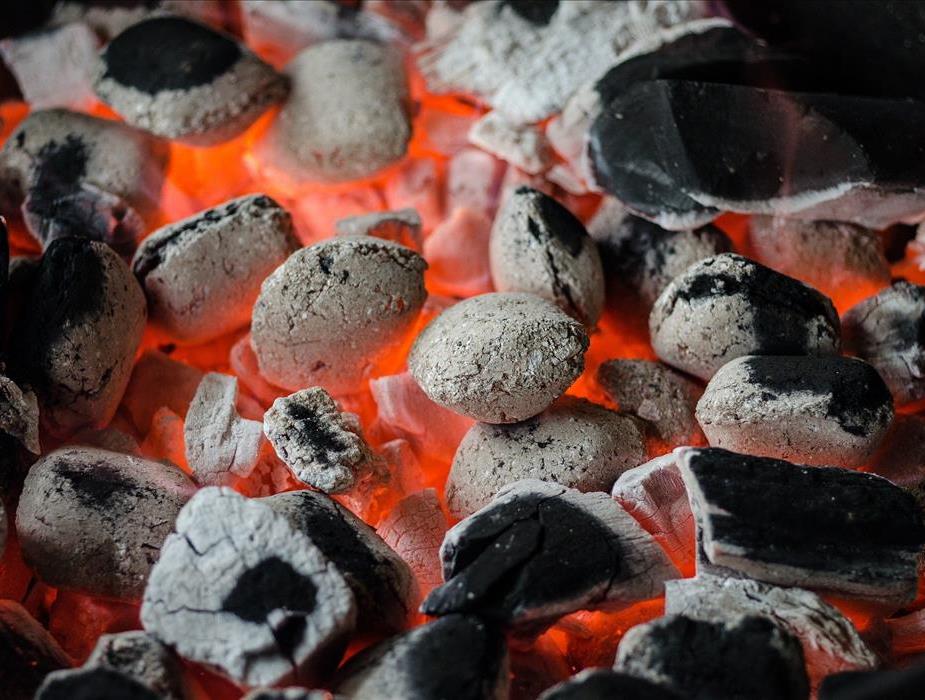 Grilling Fire Safety
Grilling Fire Safety
Grill Fires Can Turn Dinner into Disaster
Local SERVPRO fire and water clean-up professional offers safety tips to help outdoor chefs prevent fires and burn injuries.
Chicago, IL (Grassroots Newswire) August 2, 2021 - As the summer season approaches, local fire and disaster remediation specialists of SERVPRO of Logan Square/Humboldt Park knows that the number of grill fires will increase, peaking in July. "Charcoal and gas grills, barbeques and the like are involved in an average of more than 5,000 structure fires each year and almost 5,000 additional outdoor fires." Beyond that, grilling accidents result in 19,700 trips to the hospital annually. Thermal burns account for 9,500 of those visits, and children under the age of five account for an average of 2,000, or 39 percent, of those burns.1
SERVPRO knows that families can take steps to protect their home from damage and their family from injuries and still enjoy home-grilled, summer meals.
Before you grill: 1
- READY: Clean grill racks and grease trays. For gas grills, check the gas tank hose for leaks at the beginning of the season.
- SET: Choose a safe, firm, level spot for the grill away from coolers, running children and pets, and mingling guests. Grill outside, never in a garage or under the awning on a deck, the eaves of your home, or low-hanging branches.
- GO: Prepare the grill for cooking carefully. For charcoal grills, use a charcoal chimney with newspaper, a charcoal starter fluid, or an electric charcoal starter plugged into an outdoor-rated extension cord. For gas grills, open the lid before turning the grill on. If you smell gas after the grill is lit, do not try to move the grill. Get away from the grill and call the fire department.
While you grill:2
- SAFE ZONE: Keep children and pets at least three feet away from the hot grill, both while you are cooking and after you serve the food. Grill surfaces can remain hot for an hour or more.
- SAFE TOOLS: Use long-handled grill utensils in good condition; avoid loose, flowing clothing; and wear flame-retardant mitts to adjust vents to help prevent burns.
- SAFE COOKING: Keep the fire under control. Manage flareups by adjusting grill height, using grill controls, or spreading out the coal bed. Keep baking soda within reach to control grease fires. Watch for blowing embers and have a fire extinguisher, a garden hose, or a bucket of sand handy to extinguish spark-triggered fires. Never attempt to move a hot grill.
"Home fires can be devastating, both financially and emotionally, because smoke and water damage often amplify the destruction to both the structure and its contents. While our SERVPRO-trained professionals are here to help you recover "Like it never even happened," if you do experience a structure fire, we believe that prevention is better than a cure. Fires and burn injuries caused by grills are not strictly a summer phenomenon. Nearly half of home grillers use their grill year-round, so it's important to keep these safety guidelines in mind all year long."
SERVPRO specializes in fire and water cleanup and restoration services and repair services, helping to remediate damage for both commercial and residential customers. For more information on SERVPRO of Logan Square/Humboldt Park, please contact (773) 873-6300. For more information on SERVPRO, please visit www.SERVPROlogansquarehumboldtpark.com.
1 https://www.nfpa.org/grilling
2 https://www.hpba.org/Consumer-Information/Barbecue-Outdoor-Living/Grill-Safety
About SERVPRO
Founded in 1967, SERVPRO is a leader and provider of fire and water cleanup and restoration services, mold mitigation, and biohazard remediation. SERVPRO's professional services network of more than 1,900 individually owned and operated franchises responds to property damage emergencies ranging from small individual disasters to multi-million dollar large-loss events. Providing coverage in the United States and Canada, the SERVPRO system has established relationships with major insurance companies and commercial clients, as well as individual homeowners.
Is Bleach The Answer To Removing Mold
6/3/2021 (Permalink)
 Bleach Isn't The Answer
Bleach Isn't The Answer
Handling a bit of fungus cleanup in your business might seem like a do-it-yourself job, but are you sure? Before you reach for the bleach, you should know that it is not the best way to eradicate mold.
How Mold Works
Mold is a fungus that spreads through airborne spores. Most of the time, there is no need for concern. However, the United States Environmental Protection Agency (EPA) states that if the conditions are right, it only takes 24 to 48 hours for mold to settle and a little over a week for it to start spreading.
Mold needs a good source of moisture, food and warmth. The more porous the nutrient source (drywall, wood, fibers), the better. Mold will penetrate these surfaces and grow deep down in them, making it hard to get rid of the infestation.
Why Bleach Is Not the Solution
Bleach is not considered an effective method for fungus cleanup for a few reasons:
- It is not effective for long term use.
- It only cleans the top layer of surfaces, allowing mold to continue growing underneath.
- It encourages growth because it creates moisture.
Furthermore, the EPA advises against the use of the chemical because if the work area is not properly ventilated, it can cause harm to those using it.
How To Take Care of the Problem
To clean up mold, you have to find the reason for the moisture that is helping it grow. Fixing water issues such as broken pipes is the first step in mold removal. The next step is to dry the area completely and get rid of the affected materials. Some small infestations might be manageable on your own, but if you are dealing with a mold problem that extends beyond 10 square feet, it is safest to ask a mold remediation specialist for help.
With the right knowledge and help from your local expert in Chicago, IL fungus cleanup might end up feeling like a minor job, after all.
SERVPRO Water Restoration Technicians (WRT) Are Experts at Efficient Drying of Homes In Chicago
5/26/2021 (Permalink)

What factors affect drying time?
A Chicago property can suffer from seasonal rainfall or internal plumbing issues during your period of ownership. A wet property is tough to dry correctly due to a lack of natural ventilation and colder areas within the property. The longer the property is wet, the more likely it is to suffer adverse damages relating to mold or water stagnation. It is essential to manage temperature, air-flow, and humidity inside the structure to maximize drying efficiency. Our technicians can mobilize special drying equipment like venting box fans and rapid air-movers to create an artificial air-flow within the structure. Using your home's central heating or portable furnaces, we can raise the temperature to an optimum level for fast-drying. As water evaporates, it can increase humidity levels, which reduces the potential for fast evaporation. By deploying dehumidifiers, we can regain control of the indoor environment and ensure it remains efficient for drying.
How long should it take to dry a property?
When we perform water damage restoration for Chicago residents, one of the most important questions for homeowners is how long it takes. We usually work with a ball-park figure of between two and five days to thoroughly dry a property. These estimates can be affected by the size of the property, the extent of damage, and the difficulty we expect to encounter establishing proper drying protocol. SERVPRO recognizes that water issues can be a significant inconvenience for homeowners. Our crew chiefs can communicate with you every step of ensuring that your restoration timeframe is as accurate as possible, allowing you to plan your everyday life with minimal inconvenience.
What are the stages of drying a property?
- Initial assessment using measuring devices
- Drying protocol using psychrometric controls and equipment
- Re-assessment and possible adjustment of drying strategy
If your home requires efficient drying, contact SERVPRO of Logan Square/Humboldt Park at (773) 873-6300.
Where Can Mold Damage Spread To?
5/17/2021 (Permalink)
If you have discovered a colony of mold growing in your home, you may be alarmed that it will spread to other materials and regions of the house. Mold reproduces relatively quickly, and can easily spread out across a home and create additional colonies. Sometimes, mold spores may remain dormant until they find the perfect growing conditions in your home, and so there may still be problems days or weeks after you thought the problem was stamped out. To prevent this, SERVPRO or Auburn/Rocklin does a thorough analysis of wetness and causative factors in the home, but you should also understand where mold is most likely to spread in your home.
Carpets
Carpeting across your home has a relatively high chance of incurring additional mold damage. Carpets often absorb the same moisture as higher-elevation spots of damage, and thus can easily develop mold growth even if they were not the original focal point in your damages. Furthermore, carpets in different rooms can easily transfer mold spores between each other when a human or pet steps on a developing mold patch, carrying a large mass of microscopic mold spores without ever realizing it.
Curtains, Towels, and Fabrics in Bathrooms
No matter where the mold damage is in your home, fabrics in your bathroom may be at an elevated risk simply because they are constantly in a warm, moist environment. Mold spores spread through the air across your home, and there is little to be done about this, but reducing the amount of moisture affecting fabrics and organic materials in the bathroom can help prevent mold.
Behind Walls and in Attics
The materials behind walls and in attics are commonly made of wood and perhaps paper, two highly absorbent, organic substances which are highly favored by mold. If any kind of moisture reaches these regions, mold will grow quickly in them. We use advanced detection equipment to measure humidity and risk in these areas for further mold growth.
SERVPRO of Logan Square/Humboldt Park is a locally-owned company with national assets to help stamp out even the toughest mold cases in the community. Call us 24/7 at (773) 873-6300 for mold remediation or services.
Why was the Texas freeze such an unprecedented event?
5/14/2021 (Permalink)
Here is a portion of an article reposted from Insurance Business America. Great job to SERVPRO!
By Bethan Moorcraft
“This really was an unprecedented event,” said Mike Stahl, CMO at SERVPRO, the largest restoration company in the United States. SERVPRO had hundreds of storm crews on the ground throughout Winter Storm Uri, meeting record-breaking demand from customers. Stahl commented: “In our 50-year history, Winter Storm Uri produced our number one volume day, as well as our number two, four, seven and 10 volume days. That’s a strong indication of just how significant this event was.”
The situation in Texas was unique because it was a winter storm coupled with a major power failure. The power outages aggravated the impacts of the deep freeze, causing a surge of burst pipe claims in several major Texas cities, including Houston and Dallas. Generally speaking, most homeowners’ insurance and standard commercial property policies will cover water damages caused by burst pipes – as long as they burst through sudden and unforeseen events, as was the case with Winter Storm Uri.
“This is another unprecedented factor about the Texas deep freeze event,” said Stahl. “It’s more of an insured event than some other catastrophic weather events. For example, when there’s a hurricane, there are often a lot of flood claims that are not covered by homeowners’ policies or commercial property policies. Insureds have to hold separate flood insurance policies to make those claims. But the vast majority of claims to come out of this event were frozen pipes bursting, which are generally covered in standard policies.”
Restoration companies like SERVPRO, and the insurance companies that they partner with, not only had to deal with record claims volume during Winter Storm Uri, but they also had to navigate additional challenges posed by the COVID-19 pandemic.
“When there’s a catastrophic storm event, restoration companies and the insurance industry have to bring in capacity from all over the country,” explained Stahl. “The local capacity is there to deal with a normal variation of volume or customer demand, but not the extreme variation that you get in catastrophic events.
“Bringing in extra capacity was challenging with the Texas deep freeze. Not only did we have COVID-related travel advisories, quarantine rules, and health and safety guidelines to follow, but we were also contending with the fact that the winter storm hit other areas of the country. Most nearby states - including Kansas, Missouri, Oklahoma, Tennessee – were covered in snow. They were already seeing excessive customer demand and had less capacity to send to Texas. A storm is always a capacity challenge relative to the demand.”
After A Storm, Water In Buildings
5/10/2021 (Permalink)
Call SERVPRO when outside water makes its way indoors!
SERVPRO is a leader in disaster restoration. Our services include water damage, fire damage, and mold remediation.
Water damage can occur for several reasons, including burst pipes, broken appliances, and flooding from natural disasters.
One of the most common types of water damage calls we receive after storms is called water ingress.
What is water ingress?
Water ingress, also known as penetrating damp, is when water from outside infiltrates a property. It happens for various reasons and ways.
Put another way, whenever water passes through walls and comes inside the property, it’s water ingress.
Water making its way into your building or house is something to worry about because it could result in damage and lead to expensive and further problems.
The damage can include fungal decay, destruction of the decoration, and long-term mold issues associated with dampness. These can have effects on your health and lifestyle; therefore, preventing water ingress is crucial. The solution? Contact a local water ingress expert like SERVPRO.
Causes of water ingress in buildings:
There are several reasons for water ingress. Here are some of the most common:
- Damaged Walls - deteriorated wall results in seals between mortar and brickwork becoming porous; this allows water through the wall, otherwise known as water ingress.
- Defective or leaking drainage - cracked, blocked, and defective downpipes with faulty seals are one of the main reasons for penetrating damp and water ingress.
- Roof damage - Any missing shingles or defective seals will allow water ingress. Roof maintenance and inspection are essential in identifying broken or missing tiles or seals to prevent this water entryway.
- Leaky basement window seals - if there are broken or damaged seals around basement windows, the waterproofing capabilities are diminished, and water will likely ingress into the building.
- Flash Flooding - If your residency is in an area where floods are common, then the large volume of water is a common factor for resulting water ingress
In short, defects in the building, such as cracks, put your property at risk of water ingress. Water ingress risk increases with a large volume of water from flash floods or storms.
Where can water ingress?
Water ingress in basements, cellars, and roofs has the greatest chance of occurrence in any property.
If you’re going to assess where water ingress has a chance for developing on your property, you should look at these common signs:
- Plaster peeling off the wall
- Damp, musty smell in the attic or basement
- Mold growth on any wall
- Damp patches on any wall
- Visible water in basement or attic
Type C waterproofing systems are widely known and used to drain out the water safely from the property. If you suspect your waterproofing system is damaged, contact a waterproofing specialist like SERVPRO. We deal with all kinds of queries and are here to serve and assist you.
Water ingress mitigation
In mitigation, you first need to assess the situation. The most crucial stage to treat the water ingress is to check the dampness and determine the water’s source. After the assessment, professionals must remove moisture and water from your property from both the structure and air itself. The last step of the mitigation process is the restoration and sanitation of the property to return to a healthy and safe condition. Trust the professionals at SERVPRO to determine the cause of the situation and provide the necessary steps for repairs.
Regular checks will help ensure that building defects will not be hazardous and stop the water from making its way into the property. Efficient and fast clean up is crucial; we have water ingress mitigation specialists to help your business get in the pre-disaster condition and become fully operational again.
Suppose you’re struggling with any damp related issue or water ingress. In that case, SERVPRO is the preferred water restoration vendor for many insurance companies. They will help you diagnose and identify the solution so you can be free from water ingress and dampness-related issues.
Water mitigation is an essential part of restoring your property. Address any water damage signs as soon as you spot them—this will save you from long-term hassles, time, and further costs. SERVPRO specializes in drying, cleaning, restoring, and sanitizing your property. Contact us if you’ve noticed water ingress at your office, business, or home. We are here to assist you!
What Impact Does Water Damage in a Commercial Facility Have on Property Insurance?
5/3/2021 (Permalink)
Blog Summary: SERVPRO of Logan Square/Humboldt Park helps businesses understand the impact of water damage on commercial property insurance.
At any time and without warning, a commercial water damage disaster can strike, filling the business owner’s life with stress and worry. The team at SERVPRO of Logan Square/Humboldt Park lives and works in this community. When local businesses suffer water damage, fire damage, or smoke damage due to any size disaster, the SERVPRO professionals are the premier cleanup and restoration company in the region who can quickly restore the damaged commercial building.
Businesses and institutions were confronted with water damage challenges in 2020 that will extend into the foreseeable future due to labor shortages and poor quality of workmanship.
According to a corporate-level manager overseeing the large property loss division for a major insurance company, “Water damage is one of the largest loss causes we deal with in the commercial insurance industry, yet only a small percentage of clients have a formal Water Damage Prevention Plan in place. Those with higher exposures should have plans to both prevent an incident and to mitigate the severity of loss should one occur.”
Common Causes of Water Damage in a Commercial Setting
Aging plumbing systems and sprinkler systems that have been poorly or improperly maintained can cause significant property damage resulting in disruption of business operations. Sprinkler system discharge causes more severe damage to multi-story buildings where the water can rapidly travel from floor to floor. Plumbing failures, though more gradual, can also cause water damage across many floors of a building. Both sources of water commonly damage physical property and the contents, including furniture, flooring, equipment, product, and raw materials.
The severity of the loss depends on the origin of water, how swiftly the issue is recognized, and the type of contents that are damaged.
Damage analysis reveals that small amounts of water can cause significant losses. Examples include:
- High-value equipment such as electronics, computers, or circuit boards
- The vertical risk loss multiplier - Water damage to multiple floors could involve demolition, repair, and replacement of flooring, ceilings, and walls on multiple floors.
- Property evacuation that results in litigation, the forfeiture of rental income, or the departure of tenants
- Production and fabrication equipment - Production interruptions incur direct and indirect losses such as short-term revenue interruption or the loss of customers. Customer acquisition costs, which can be substantial, are often overlooked or underestimated by businesses.
The scale of these losses often hinges upon a business’s preparation to respond to the disruption. Lethargy translates into losses. A rapid, focused response reduces losses.
Plan to Succeed When Faced With a Commercial-Sized Water Damage Disaster
Effective protection and mitigation strategies to protect against interior and exterior water damage encompass simple but critical action steps.
- Identify and understand the nature of exposures to damage.
- Take proactive measures to avoid water damage to production/fabrication machinery, product inventory, raw materials, tools, electronics, data storage stations, etc.
- Schedule regular building maintenance that addresses the upkeep of potential sources of water damage, such as plumbing and sprinklers. A component of this maintenance protocol should include searching for hidden water damage or deterioration resulting from a minute or slow water intrusion.
- Swiftly execute well-planned and practiced remediation strategies in the event of a water intrusion event.
How Are Insurance Companies Responding to Commercial Water Damage Claims?
Many insurance companies are implementing approaches that facilitate the creation of a culture in the commercial setting that fosters prevention, identification, and rapid response to stop the water intrusion and repair the damage before the occurrence of advanced secondary water damage, including mold and mildew infestation.
Achievement of this worthy goal includes the provision of risk engineering for clients. Businesses and industries will be subject to more stringent compliance requirements for coverage. Ongoing facility maintenance and the implementation of water leak detection technology may be components of these tighter requirements. Finally, business and industry may experience increased coverage premiums for compliance deficiencies.
The professionals at SERVPRO of Logan Square/Humboldt Park have formal training to recognize water damage liability exposures and consult with businesses regarding risk improvement strategies. Having a Ready Plan is crucial for every business.
SERVPRO of Logan Square/Humboldt Park is locally owned and backed by a nationwide system of qualified franchises. Being centrally located in Chicago means that the team is a short distance to any location in the community. The restoration experts specialize in residential damage restoration, commercial damage restoration, and large-scale disaster cleanup and restoration.
For more information about commercial water damage restoration in Logan Square/Humboldt Park, Chicago, IL, contact the office by phone at (773) 873-6300.
A Roof Can Cause Water Damage
4/30/2021 (Permalink)
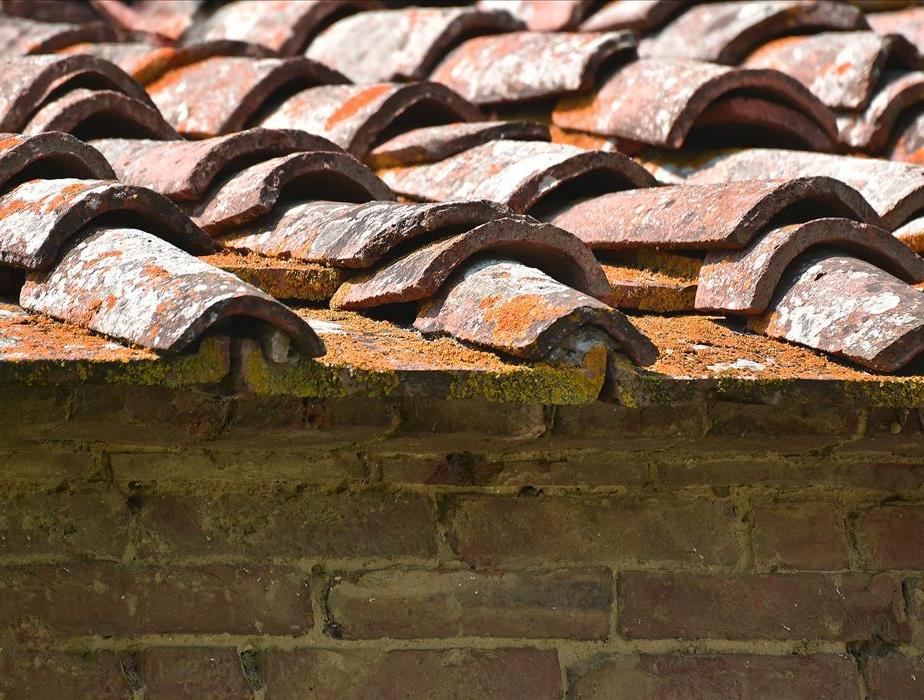
Water damage is never something that is attractive to business. When the stagnant water has caused an unsightly stain on your ceiling, and even dripped through onto customers, your reputation is bound to be impacted. To avoid losing customers, and to reduce the chances of further property damage, it is wise to contact a professional for help as soon as you can.
The quicker that capable technicians can respond to the water damage inside of your Chicago property, the more likely a successful restoration can occur. Ignoring the problem could lead to mold damage in the structure of the attic space above your pub. Continuing to ignore the problem could lead to rot and potential violations of municipal safety codes. Addressing the problem swiftly can save you further expenses in the long run and improve the reputation of your business.
When you reach out to SERVPRO, our technicians always go the extra mile to arrive at your business as soon as possible. Our experts aim to work around your schedule and keep out of sight and mind. If you would prefer our technicians to work through the night, we can do so. We always strive to be as unobtrusive as possible to your business and foot traffic.
To handle the water damage inside of your property, our technicians can remove the stained paneling from your ceiling. We can set up advanced technology designed to improve airflow through your attic space, such as ventilation fans, dehumidifiers, and air movers. Using all of these specialized tools in conjunction creates an environment that fosters evaporation. Drawing out the water can bring the moisture levels of your pub back down to an acceptable amount and prevent further damage from occurring.
Furthermore, here at SERVPRO, we strive to be as helpful as possible and can put you in contact with a contractor who can fix the leaky patch of your roof.
If your business suffers water damage, never wait to contact help. Get in touch with SERVPRO of Logan Square/Humboldt Park by dialing (773) 8733-6300. It doesn't matter the time or day; our experts are available to help you.

 24/7 Emergency Service
24/7 Emergency Service





